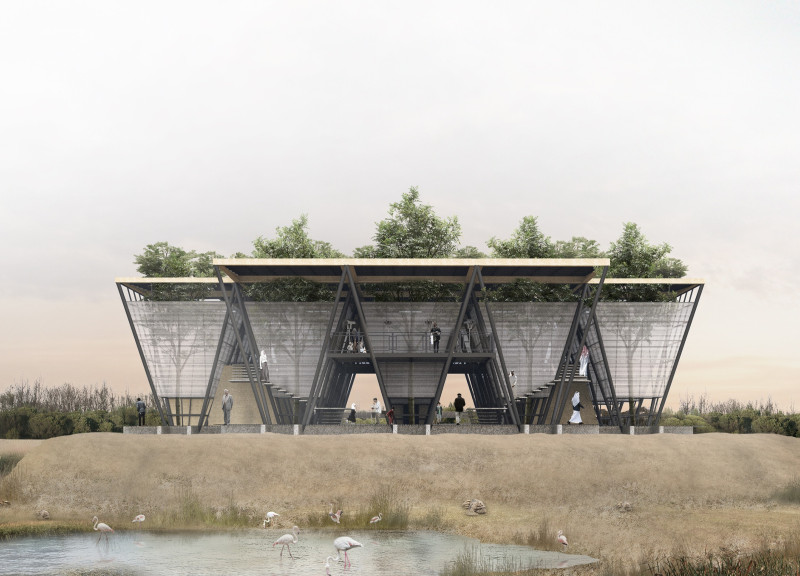5 key facts about this project
Unique Design Approaches and Contextual Integration
The architectural design of the visitor center features a triangular framework, primarily constructed from steel, that reflects a modern aesthetic while ensuring structural integrity suited to the local environmental conditions. The integration of large glass facades allows for expansive views of the wetlands, creating a visual connection between the interior spaces and the natural landscape. This design choice emphasizes transparency, allowing natural light to permeate while minimizing the need for artificial illumination.
Notable elements include the two-storey layout that accommodates a variety of functional spaces. The ground floor features an information center and exhibition area, facilitating visitor engagement with educational displays about local biodiversity. The second floor houses a training room that offers panoramic views, enabling observation of wildlife while providing educational opportunities.
The visitor center’s commitment to sustainability is underscored by its passive cooling design, utilizing natural ventilation strategies that reduce reliance on mechanical systems. This approach not only enhances comfort but also aligns with environmental conservation goals. The materials selected for construction, including locally sourced concrete and wood, reinforce the connection to the regional identity while promoting a minimal ecological footprint.
Functional Spaces and User Experience
The Al Wathba Flamingo Visitor Center is meticulously planned to support its primary function as an ecological education hub. It includes flexible spaces tailored for various activities, such as workshops, guided tours, and interactive learning experiences. Accessibility has been prioritized in the design, ensuring that all visitors can navigate the facility comfortably.
Significant attention has been directed toward the landscaping surrounding the center. Native plant species have been incorporated to promote local biodiversity and provide suitable habitats for wildlife, making the visitor center an integral part of the ecosystem. This thoughtful integration enhances the user experience by immersing visitors in a natural setting while fostering a deeper appreciation for the environment.
For those interested in a comprehensive understanding of the Al Wathba Flamingo Visitor Center project, exploring its architectural plans, architectural sections, and architectural designs will provide invaluable insights. Delve deeper into the architectural ideas that shaped this facility and consider how they contribute to contemporary practices in sustainable architecture.


























